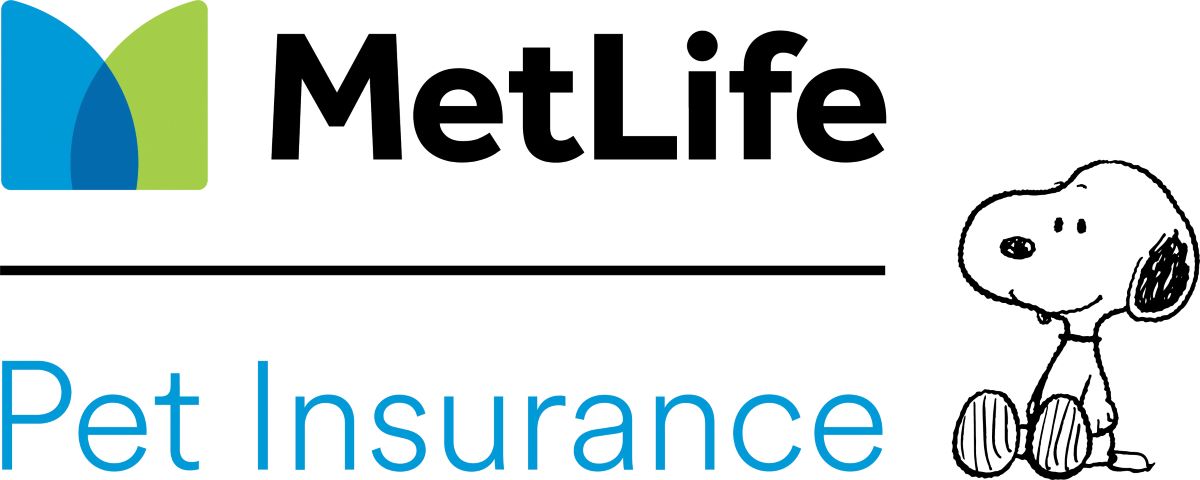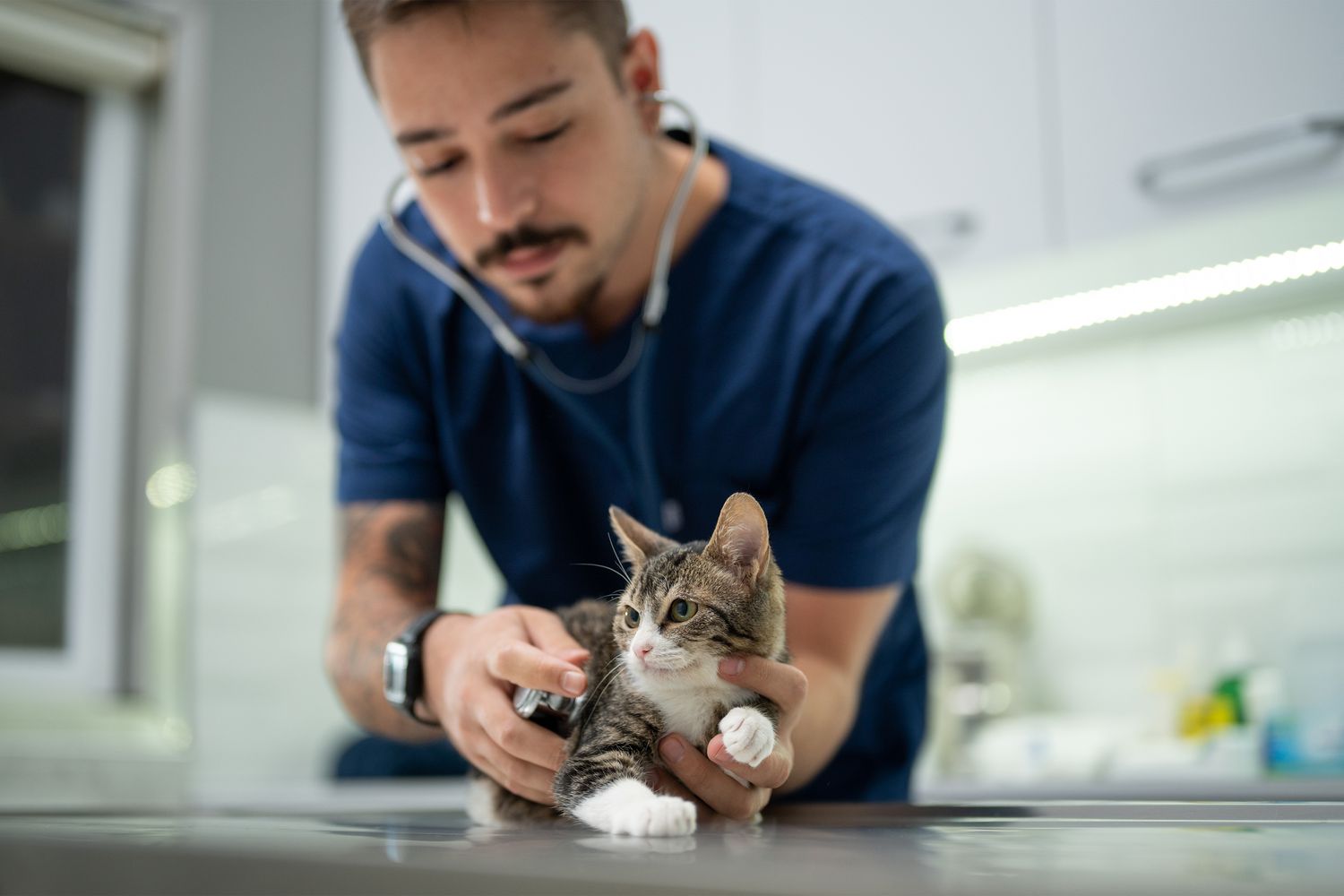

Finance
How Much Does Metlife Pet Insurance Cost
Modified: December 30, 2023
Get a clear idea of how much Metlife pet insurance will cost you. Protect your furry friend's health with affordable insurance options. Finance your pet's care today!
(Many of the links in this article redirect to a specific reviewed product. Your purchase of these products through affiliate links helps to generate commission for LiveWell, at no extra cost. Learn more)
Table of Contents
- Introduction: Understanding the Cost of Metlife Pet Insurance
- Coverage Options: Finding the Right Protection for Your Pet
- Basic Plan: Essential Coverage for Accidents and Illnesses
- Comprehensive Plan: Complete Coverage for Your Pet’s Well-being
- Deductible Options: Finding the Right Balance for Your Budget
- Reimbursement Levels: Maximizing Your Pet Insurance Benefits
- Additional Coverage Options: Tailoring Your Pet Insurance Policy
- Pricing Factors: Understanding How Metlife Pet Insurance Determines Premiums
- Sample Premiums: Illustrating the Cost of Metlife Pet Insurance
- Conclusion: Protecting Your Pet’s Health with Metlife Pet Insurance
Introduction: Understanding the Cost of Metlife Pet Insurance
When it comes to the well-being of our beloved furry friends, many pet owners want nothing but the best. From regular vet visits to unexpected medical emergencies, the cost of providing quality care for your pet can add up. That’s where pet insurance comes into play. With the right insurance coverage, you can protect yourself from significant financial burdens and ensure that your pet receives the medical attention they need.
Metlife Pet Insurance offers a range of coverage options to suit the unique needs of different pets and their owners. By understanding the factors that influence the cost of your pet insurance policy, you can make an informed decision about the coverage that suits your budget and provides comprehensive protection for your furry friend.
In this article, we will explore the various coverage options and pricing factors associated with Metlife Pet Insurance. Whether you have a playful pup or a sophisticated feline companion, we’ll help you understand the potential costs involved in insuring your pet’s health and well-being.
Note that the specific costs of Metlife Pet Insurance can vary depending on factors such as your pet’s breed, age, and overall health. However, by gaining a general overview of the coverage options and pricing factors, you can better estimate the potential cost of insuring your pet with Metlife.
Coverage Options: Finding the Right Protection for Your Pet
Metlife Pet Insurance offers two main coverage options: the Basic Plan and the Comprehensive Plan. Both plans are designed to provide essential coverage for a variety of medical expenses. Let’s take a closer look at each option to help you decide which one is best suited for your pet’s needs.
Basic Plan: The Basic Plan offered by Metlife Pet Insurance provides coverage for accidents and illnesses. This includes veterinary exams, diagnostic tests, surgeries, hospital stays, and prescription medications. It offers financial protection against unexpected medical expenses that may arise due to accidents or illnesses. While the Basic Plan does not cover routine care such as vaccinations and wellness exams, it provides essential coverage for unforeseen medical situations.
Comprehensive Plan: For pet owners seeking more comprehensive coverage, Metlife offers the Comprehensive Plan. This plan includes all the features of the Basic Plan, along with additional coverage for routine and preventive care. This can include vaccinations, annual wellness exams, dental cleanings, flea and tick prevention, and more. The Comprehensive Plan is ideal for pet owners who wish to have a comprehensive insurance policy that covers both unexpected accidents and illnesses, as well as routine care.
When choosing between the Basic Plan and the Comprehensive Plan, consider factors such as your pet’s age, breed, and overall health. If you have a young and healthy pet, the Basic Plan may provide sufficient coverage. However, if your pet is older or has specific health considerations, the Comprehensive Plan might be a better option to ensure comprehensive and proactive care.
Additionally, keep in mind that both plans have certain limits and exclusions. It’s important to thoroughly review the policy details and consult with a Metlife representative to ensure you choose the best coverage option for your pet’s specific needs.
Basic Plan: Essential Coverage for Accidents and Illnesses
The Basic Plan offered by Metlife Pet Insurance provides valuable coverage for accidents and illnesses that your pet may experience. While it does not include routine care, it offers essential protection against unexpected medical expenses. Let’s delve into the details of the Basic Plan to understand its coverage and benefits.
Under the Basic Plan, your pet is covered for a variety of veterinary services and treatments. This includes coverage for veterinary exams, diagnostic tests, surgeries, hospital stays, and prescription medications. In the event of an accident or illness, this coverage can provide financial relief by reimbursing a portion of the incurred expenses.
It’s worth noting that the Basic Plan does come with certain limits and exclusions. It’s crucial to review the policy details carefully to understand what is covered and what is not. For example, pre-existing conditions, cosmetic procedures, and certain hereditary or congenital conditions may be excluded from coverage.
The coverage under the Basic Plan is designed to help pet owners manage unexpected medical expenses that may arise due to accidents or illnesses. Whether your pet suffers from a broken bone, an infection, or a chronic illness, having this coverage can give you peace of mind, knowing that you have a safety net to rely on.
When considering the Basic Plan, it’s important to evaluate your pet’s age, breed, and lifestyle. While this plan may provide sufficient coverage for younger and healthier pets, it’s essential to assess whether your pet requires additional coverage for routine care, such as vaccinations and wellness exams.
Keep in mind that the cost of the Basic Plan will vary depending on factors such as your pet’s age, breed, and location. It’s recommended to request a personalized quote from Metlife to get an accurate estimate of the premium associated with this plan.
By opting for the Basic Plan, you are taking a proactive step towards providing your pet with essential coverage for accidents and illnesses. This can help alleviate the financial strain of unexpected medical situations, allowing you to focus on providing the best care for your furry friend.
Comprehensive Plan: Complete Coverage for Your Pet’s Well-being
If you’re looking for comprehensive coverage that includes both accidents and illnesses, as well as routine care, then the Comprehensive Plan offered by Metlife Pet Insurance may be the ideal choice for you and your furry companion. With a range of added benefits, this plan provides complete protection for your pet’s overall well-being.
Under the Comprehensive Plan, your pet is covered for all the features included in the Basic Plan, such as veterinary exams, diagnostic tests, surgeries, hospital stays, and prescription medications. However, what sets this plan apart is the inclusion of routine and preventive care coverage.
Routine care coverage encompasses a variety of services that are essential for maintaining your pet’s health. This can include vaccinations, annual wellness exams, dental cleanings, flea and tick prevention, and behavioral training. By having coverage for routine care, you can ensure that your pet receives regular check-ups and preventative treatments that can help prevent future health issues.
By opting for the Comprehensive Plan, you have the advantage of a more proactive approach to your pet’s healthcare. Regular vaccinations and wellness exams can catch potential health concerns early on, allowing for prompt treatment and a higher chance of successful outcomes.
It’s important to review the policy details and limitations of the Comprehensive Plan to understand what is covered and any exclusions that apply. For instance, certain pre-existing conditions or cosmetic procedures may not be covered under this plan. A thorough understanding of the coverage can help you make informed decisions about your pet’s overall healthcare needs.
Since the Comprehensive Plan includes coverage for routine care, it is typically associated with a higher premium compared to the Basic Plan. However, it may be a worthwhile investment, especially if you want a comprehensive and proactive healthcare approach for your pet.
Consider your pet’s age, breed, and lifestyle when deciding whether the Comprehensive Plan is the right choice. If you have a younger pet or one with specific health concerns, this plan can provide peace of mind and comprehensive coverage.
By selecting the Comprehensive Plan, you are taking a significant step towards ensuring the overall health and well-being of your furry friend. With coverage for accidents, illnesses, and routine care, you can provide your pet with comprehensive protection and proactive healthcare, allowing them to live their happiest and healthiest life.
Deductible Options: Finding the Right Balance for Your Budget
When reviewing your pet insurance options with Metlife, one important factor to consider is the deductible. The deductible is the amount you are responsible for paying out of pocket before your insurance coverage kicks in. Metlife Pet Insurance offers a range of deductible options to suit different budgets and preferences. Let’s explore the deductible choices available and how they can impact your insurance coverage.
Metlife Pet Insurance typically offers deductible options starting from as low as $100 and going up to $1,000 or more. The deductible you choose will affect your premium and the amount you pay for your pet insurance coverage. A lower deductible means a higher premium, while a higher deductible can result in a lower premium.
In general, if you anticipate frequent veterinary visits or if your pet is prone to accidents or illnesses, it may be beneficial to opt for a lower deductible. This way, you’ll have a smaller out-of-pocket cost before your insurance coverage begins to reimburse you for eligible expenses.
On the other hand, if your pet is in good health and you’re primarily seeking coverage for catastrophic events or unexpected illnesses, a higher deductible may be a more suitable choice. This can help lower your premium costs, as you’ll be assuming more responsibility for the initial expenses.
It’s important to note that the deductible is typically applied on an annual basis. Once you’ve reached your deductible for the year, future eligible expenses will be covered according to the terms of your policy.
When selecting a deductible, consider your financial situation and the level of risk you’re comfortable with. Evaluate your pet’s health history and anticipated vet costs to determine the deductible amount that strikes the right balance for your budget.
As with any insurance decision, it’s recommended to thoroughly review the policy details, including the deductible options, to ensure you have a clear understanding of how it affects your coverage. Consulting with a Metlife representative can also provide valuable insights and guidance in choosing the deductible that aligns with your needs.
By selecting the right deductible option for your pet insurance policy, you can ensure that you have a level of financial protection that suits your budget while still providing coverage for the unexpected expenses that may arise in your pet’s health journey.
Reimbursement Levels: Maximizing Your Pet Insurance Benefits
A crucial aspect of pet insurance coverage is the reimbursement level. This is the percentage of eligible expenses that will be reimbursed by Metlife Pet Insurance after you’ve met your deductible. Understanding the reimbursement levels offered by Metlife can help you assess the financial benefits and make informed decisions about your pet’s insurance coverage.
Metlife Pet Insurance typically offers reimbursement levels ranging from 70% to 90%. This means that after meeting your deductible, you are eligible to receive reimbursement for a percentage of the covered expenses. For example, if you have a reimbursement level of 80% and incur a covered expense of $500, you would receive a reimbursement of $400.
Consider your pet’s health history, breed, and potential future medical needs when deciding on the reimbursement level. If your pet has a chronic condition or requires frequent medical care, opting for a higher reimbursement level can help offset the costs more effectively. However, it’s important to note that a higher reimbursement level usually results in a higher premium.
Conversely, if your pet is generally healthy and you’re primarily seeking insurance coverage for unforeseen accidents or diseases, a lower reimbursement level may be sufficient. This can help manage your premium costs while still providing financial protection for unexpected veterinary expenses.
Review the policy details with Metlife to ensure you have a clear understanding of what expenses are eligible for reimbursement and any limits or exclusions that may apply. It’s also advisable to consult with a Metlife representative to help you determine which reimbursement level aligns best with your financial situation and your pet’s healthcare needs.
Keep in mind that the reimbursement level, along with the deductible, will impact the overall out-of-pocket expenses you incur for your pet’s medical care. Evaluate your budget and assess the potential costs to choose the reimbursement level that maximizes your pet insurance benefits without straining your finances.
By selecting the appropriate reimbursement level, you can ensure that you have the financial support you need to provide the necessary medical care for your pet. With Metlife Pet Insurance, you can feel confident that you have a trusted partner to help shoulder the burden of veterinary expenses and prioritize your pet’s well-being.
Additional Coverage Options: Tailoring Your Pet Insurance Policy
Metlife Pet Insurance offers additional coverage options that can be added to your policy for enhanced protection and peace of mind. These options allow you to customize your pet insurance policy to suit your pet’s specific needs and your individual preferences. Let’s explore the additional coverage options available to ensure comprehensive coverage for your furry friend.
Wellness Coverage: In addition to the basic accident and illness coverage, Metlife offers optional wellness coverage. This coverage includes routine care such as vaccinations, annual check-ups, dental cleanings, and preventive treatments. By adding wellness coverage to your policy, you can ensure that your pet receives the necessary preventive care to maintain their overall health and well-being.
Hereditary and Congenital Conditions: Some pets may be predisposed to certain hereditary or congenital conditions. With this optional coverage, you can have financial protection in case your pet experiences health issues associated with these pre-existing conditions. It covers expenses related to inherited or genetic conditions that may arise throughout your pet’s lifetime.
Behavioral Therapy: If your pet requires behavioral therapy or consultations with a professional trainer, this optional coverage can be beneficial. It helps cover the costs associated with addressing behavioral issues, ensuring your pet receives the necessary support for their mental well-being.
Alternative Therapies: Metlife also offers coverage for alternative therapies such as acupuncture, chiropractic care, and physical therapy. These complementary treatments can be beneficial in managing chronic pain or aiding in the rehabilitation process after an injury or surgery.
It’s important to note that the availability of these additional coverage options may vary depending on your location and the specific policy you choose. Review the details of each option and discuss them with a Metlife representative to determine which additional coverage options are available for your pet.
Assess your pet’s individual needs and consider factors such as breed, age, and any pre-existing conditions when deciding on additional coverage options. While these options may result in a higher premium, they can provide valuable protection and support in managing your pet’s health and well-being.
By customizing your pet insurance policy with additional coverage options, you can ensure that you have a tailored plan that meets the unique needs of your pet. With Metlife Pet Insurance, you have the flexibility to choose the coverage that provides comprehensive protection and peace of mind for you and your beloved furry companion.
Pricing Factors: Understanding How Metlife Pet Insurance Determines Premiums
The cost of your Metlife Pet Insurance policy is determined by several key factors. Understanding these pricing factors can help you estimate the premium you can expect to pay for your pet’s insurance coverage. Let’s explore the factors that influence the pricing of pet insurance with Metlife.
Pet’s Breed and Age: The breed and age of your pet play a significant role in determining the premium. Certain breeds may be more susceptible to specific health conditions, which can impact the cost of coverage. Additionally, older pets generally have higher medical risks and may require more extensive coverage, resulting in higher premiums.
Location: The geographic location where you reside also influences the cost of your pet insurance. Veterinary fees and overall healthcare costs can vary depending on the area, which impacts the premium you’ll pay for your pet’s coverage.
Policy Coverage: The level of coverage you choose for your pet, such as the type of plan (Basic or Comprehensive) and the presence of any additional coverage options, will affect the premium. Plans with more extensive coverage and added benefits typically come with higher premiums.
Deductible and Reimbursement Levels: The deductible and reimbursement levels you select for your policy directly influence the premium cost. A lower deductible or higher reimbursement level will generally result in a higher premium, while a higher deductible or lower reimbursement level can reduce your premium.
Pet’s Health History: The health history and pre-existing conditions of your pet can impact the premium. Pets with previous medical conditions may require higher coverage, which can result in a higher premium.
Discounts: Metlife Pet Insurance may offer discounts for various reasons, such as insuring multiple pets or being a member of certain organizations. These discounts can help reduce the overall premium cost and make coverage more affordable.
It’s important to keep in mind that the specific premiums for your pet insurance can vary based on these factors. Metlife Pet Insurance provides personalized quotes considering the unique circumstances of your pet. Requesting a quote directly from Metlife is the best way to get an accurate estimation of the premium for your pet’s coverage.
By considering these pricing factors, you can assess the affordability and value of the coverage options available. Evaluating your pet’s specific needs, budget, and desired level of protection will help you choose a policy that strikes the right balance of comprehensive coverage and reasonable premiums.
Sample Premiums: Illustrating the Cost of Metlife Pet Insurance
While the exact premiums for Metlife Pet Insurance will vary based on factors specific to your pet, let’s explore some sample premiums to give you an idea of the potential cost. These sample premiums can help you estimate the price range you might expect when insuring your furry friend.
- Basic Plan Sample Premium: For a young and healthy dog of a common breed, the premium for the Basic Plan could range from $20 to $30 per month. This assumes a reimbursement level of 80% and a deductible of $500.
- Comprehensive Plan Sample Premium: If you opt for the Comprehensive Plan with added coverage for routine care, the premium may range from $40 to $60 per month. This includes a reimbursement level of 90% and a deductible of $250.
- Multiple Pet Discount: Metlife Pet Insurance offers discounts for insuring multiple pets. If you have two or more pets, you may be eligible for a discount of up to 10% on your total premium. This can provide cost savings, making it more affordable to insure multiple furry family members.
It’s important to remember that these sample premiums are for illustrative purposes only. The actual cost of your pet insurance policy with Metlife will depend on factors such as your pet’s breed, age, location, the level of coverage you choose, and any additional options or discounts applicable.
To get an accurate estimate of the premium for your specific situation, it’s recommended to request a customized quote from Metlife. This will provide you with the most accurate pricing information based on your pet’s unique characteristics and your desired coverage.
Keep in mind that while pet insurance premiums are an additional expense, they can provide significant financial protection and peace of mind. By having insurance coverage, you can ensure that your pet receives the necessary medical care without the burden of unexpected expenses.
Reviewing the sample premiums and considering your budget and individual circumstances will help you make an informed decision about the affordability of Metlife Pet Insurance. Remember, it’s always wise to carefully review the details of the policy, consult with a Metlife representative, and assess the value of the coverage in relation to the cost.
Conclusion: Protecting Your Pet’s Health with Metlife Pet Insurance
Choosing the right pet insurance is a crucial decision for any pet owner who wants to ensure their furry friend receives the best possible care. Metlife Pet Insurance offers a range of coverage options and additional features to suit the diverse needs of pets and their owners. From accidents and illnesses to routine care, Metlife provides comprehensive coverage to protect your pet’s health and well-being.
By understanding the various coverage options, including the Basic Plan and the Comprehensive Plan, you can select a policy that aligns with your pet’s unique needs and your budget. Additionally, the deductible and reimbursement levels allow you to fine-tune your coverage to strike a balance between managing costs and providing robust financial protection.
With additional coverage options such as wellness care, hereditary conditions, behavioral therapy, and alternative therapies, you have the flexibility to tailor your policy to address specific concerns and provide comprehensive care for your pet.
While the pricing factors and sample premiums can give you an idea of what to expect, it’s important to request a personalized quote from Metlife to receive accurate pricing information based on your pet’s individual characteristics and the coverage options you choose.
Ultimately, investing in Metlife Pet Insurance can provide peace of mind and financial security, knowing that you have a trusted partner to help manage the costs of your pet’s medical care. By insuring your pet’s health, you can focus on enjoying all the joyful moments and precious memories with your furry companion without the worry of unexpected veterinary expenses.
Take the time to carefully review the policy details, consult with a Metlife representative, and consider your pet’s needs. By choosing Metlife Pet Insurance, you’re taking a proactive step towards safeguarding your pet’s health and ensuring they receive the care they deserve.














